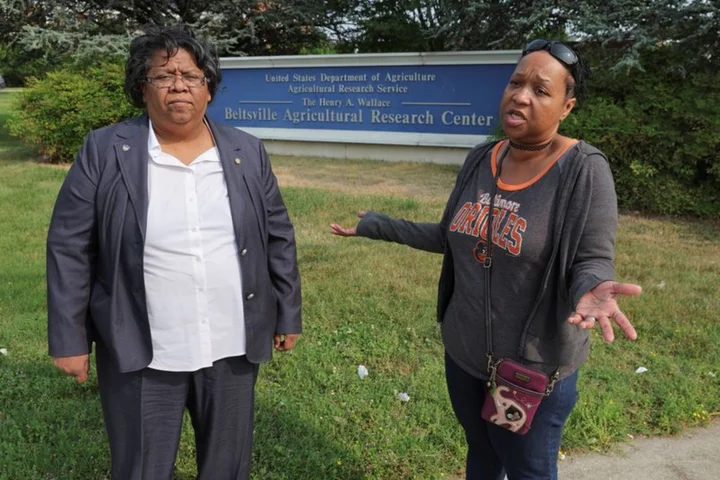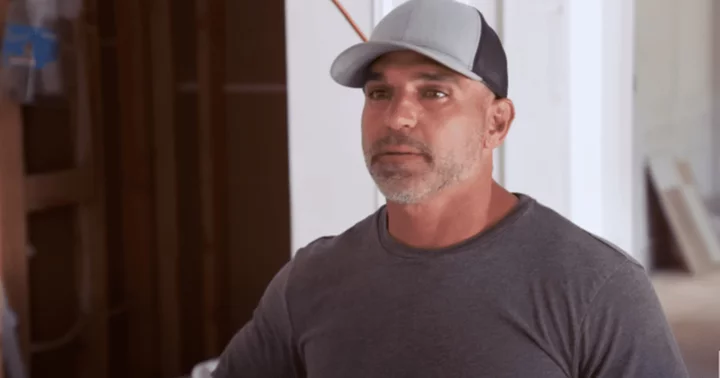By Leah Douglas
Three employees of the largest agricultural research facility in the U.S. have filed federal whistleblower complaints alleging that the facility’s conditions are hazardous to workers and undermine their research, even as farmers are facing pressing issues like climate change, according to documents reviewed by Reuters and interviews with staff.
The Beltsville Agricultural Research Center (BARC) near Washington D.C. is the largest research facility owned by the U.S. Department of Agriculture (USDA) and has long been the flagship of U.S. farm research. Yet conditions at the facility have been worsening for years due to staff cuts and deferred maintenance that have left its basic systems in disrepair, according to the documents and interviews.
Reuters spoke with five current and one former employee of the facility who said that fume ventilation hoods in labs fail to meet code, fire alarms are left broken for months, wild temperature swings make work uncomfortable and undermine experiments, and even toilets and running water are often not functioning. The news agency reviewed hundreds of documents, photographs and videos the employees shared to support their claims.
The employee grievances filed Tuesday with the U.S. Office of the Special Counsel (OSC), which protects federal whistleblowers, cited years of mismanagement and unsafe work conditions in a dossier whose details have not previously been made public.
The OSC is in the process of scheduling interviews with the employees who filed complaints, said Ward Morrow, Assistant General Counsel at the American Federation of Government Employees (AFGE).
“Our employees’ health and well-being is our top priority," a spokesperson at USDA’s Agricultural Research Service (ARS), which oversees BARC, told Reuters. "We remain committed to the ongoing effort to modernize our research facilities so they have workspaces that can support the critical research they carry out.”
Ashaki “Teddi” Mitchell, vice president of AFGE Local 3147 - which represents BARC workers - and a biological science laboratory technician at the facility, said the core issue is “normalized apathy” from management.
Mitchell, who has worked for BARC for 34 years and is one of the staff who filed complaints, called the condition of the facility “heartbreaking.”
“We can do so much here,” she said of research into pressing agricultural issues like climate change and food security. “We’re just not doing it.”
Years of staff complaints came to a head on Christmas Day of 2022, when a blast of cold weather burst the plumbing inside a research building at BARC. Water, ceiling tiles and drywall cascaded into offices, laboratories and storage rooms, wrecking equipment, records and data.
After the December flood, USDA managers asked employees to return to the building to begin the cleanup process even as the space - which houses labs that research pests, invasive species and water resources - remained littered with debris that independent testing showed contained asbestos and mold, according to internal emails and reports from outside contractors.
The ARS spokesperson said the agency has committed $925,000 to restoring the flooded building and replacing damaged equipment, and that it has conducted mold remediation.
The issues at BARC illustrate the declining state of U.S. public agriculture research, which experts say threatens the country’s position as a leading agricultural innovator, even as farmers face unprecedented challenges from a changing climate. The USDA spokesperson confirmed that reduced funding was impacting scientific research.
Government-owned and -funded labs have historically helped the U.S. become a leading agricultural economy by developing higher-yield and pest-resilient crops and animals. But spending on public research has dropped a third over the past 20 years, according to the USDA, even as China, the EU, and Brazil have grown their spending.
Most agriculture research in the U.S. has shifted to the private sector, whose innovations are available to farmers mainly through buying products from companies.
“We have to understand there’s a cost associated with that, and farmers end up bearing that cost,” Agriculture Secretary Tom Vilsack told Congress in March, speaking to the consequences of this trend.
Public research also tends to emphasize issues of social value, like climate change, said Phil Pardey, an applied economics professor at the University of Minnesota. Without more public research, U.S. farmers could become less resilient to changing farm conditions and fall further behind international competitors, he said.
STAFF CUTS
Founded in 1910, the BARC facility spans nearly 7,000 acres in Prince George’s County, Maryland, near the nation’s capital. The property is dotted with stately brick laboratory and administrative buildings and dozens of greenhouses, livestock barns and research fields.
The issues documented by workers and reported here affect primarily the research buildings on the campus, whose labs conduct experiments on invasive insects, animal genomics, sustainable crop practices and more.
BARC churned out important findings for decades. Its researchers bred the turkey most Americans eat on Thanksgiving in the 1940s and the Roma tomato in the 1950s.
But today, staff cuts and vacancies are hindering research scientists and their staff.
The number of employees at BARC has fallen from 600 in 2017 to 550 today, according to an ARS spokesperson. The facilities staff has shrunk from 121 in 2012 to 87 in 2023, and as of May, the facilities department had 30 vacancies, the spokesperson said.
At eight BARC buildings, the fire alarm systems are inoperable, according to documentation provided by the workers. To compensate, staff have been asked to conduct a fire watch, in which monitors patrol an area and alert others to any sign of fires, according to internal staff advisories from management seen by Reuters.
Temperature regulation is another issue. One recent spring day, an employee’s office reached 93 degrees, they told Reuters. On December 26, 2022, the day after the major flood, it was 47 degrees inside that building, and staff had been using space heaters for offices and labs, according to photos taken on the 26th and seen by Reuters.
The unreliable conditions are affecting research outcomes, making it at times impossible to complete experiments or replicate their findings, said two research employees.
Claudette Joyner, president of AFGE Local 3147 and a realty specialist at BARC who has worked there for 37 years, said ongoing vacancies raise existential questions.
“I can't leave this place for the next generation to worry about basic needs,” said Joyner, who is another of the staff who filed complaints. “That’s where it’s at: can we perform the basic job here at the facility?”
The ARS spokesperson told Reuters that “declining investment in agricultural research means that we are missing critical opportunities to capitalize on the powerful potential of our world-class scientists.”
‘WE’RE EXPOSED’
The deficiencies at BARC also pose significant health risks, employees say.
At the building that flooded in December, the laboratory chemical fume hoods, which are meant to ventilate research areas, are nearly all out of compliance with USDA code, according to data from annual inspections in 2020, 2021, and 2022 collated by BARC staff and seen by Reuters.
Hoods must draw air at an average of 60 to 100 feet per minute, a measurement called the “face velocity,” to ensure proper ventilation, according to USDA standards.
All but one of the 28 fume hoods in the BARC building had face velocities outside the recommended range at some point in the three years, with 18 hoods out of compliance for all three years, according to the data.
This spring, Mitchell was overwhelmed by an unidentified chemical smell at the building, fainted, and hit her head, requiring emergency medical services, according to her account and documents seen by Reuters. Since the incident, she has had increased headaches and is still not sure what caused it.
“Employees are exposed to chemicals, biologicals, fumes, construction hazards, physical hazards - we’re exposed to a number of things at a facility this big,” Mitchell said.
The USDA did not comment on specific allegations of health risks.
After the December flood, a firm brought in by USDA to assess the damage, Environmental Health Consultants LLC, found asbestos in flooring and ceiling material that had fallen into offices and labs, and mold in some areas of the building, according to reports prepared on January 3 and 4 by the firm for USDA and seen by Reuters.
After receiving the reports and a contractor’s cleanup quote, BARC’s director, Howard Zhang, told employees in a January 9 email seen by Reuters to enter the building to retrieve items they wanted to save to lower the cleanup cost. While the mold report included a recommendation that cleanup workers wear respirators and full-body coveralls, Zhang’s email only recommended that staff wear masks.
Zhang did not respond to a request to comment and USDA did not provide any comment on the timeline or conditions of workers returning to the flooded building. The ARS spokesperson told Reuters weekly mold air sampling is ongoing in the building.
USDA management has been made aware of these issues. On February 22, several BARC employees met with Thomas Shanower, the director of USDA’s Northeast Area, a division that oversees 15 research centers, including BARC. They showed him a slideshow, seen by Reuters, that documented building and safety issues.
Conditions at the facility have not changed since the meeting, said Mitchell, who attended.
The issues with chemical fumes, fire protection and other conditions could violate Occupational Safety and Health Administration (OSHA) standards, said Milly Rodriguez, health and safety specialist with the AFGE.
“Some of those [exposures] could have longer-term health effects,” Rodriguez said.
Employees at BARC have also not received mandatory OSHA training in several years, according to the slideshow prepared by staff for the February meeting with BARC management.
(Reporting by Leah Douglas; editing by Richard Valdmanis and Claudia Parsons)









